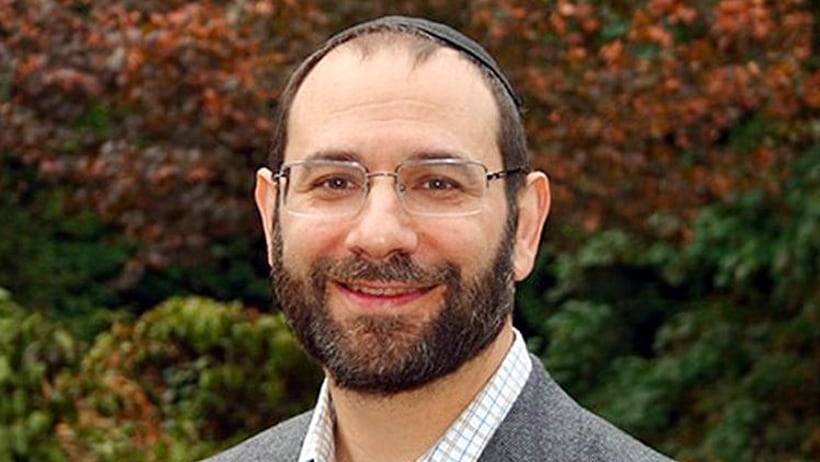Oasis Songs: Musings from Rav D
Friday, April 9, 2021 / 27 Nisan 5781
Summary: This week’s Oasis Songs continues to explore the theme of hope I raised last week. The focus here is on the dangers of excessive hope or caution and looks at how the Jewish calendar trains us to walk that fine line between the two.
Reading Time: Four minutes
I have been reflecting on different aspects of hope. Last week, I shared with you the connection between unprocessed trauma, and how it can make us feel unready to hope. Students of the Israeli-Palestinian conflict see that play out.

This conversation about whether it is safe to hope seems to be playing out nationally. The news stories that capture the most attention offer us an either/or choice. Either we see masses of people gathering in Las Vegas malls or on Florida beaches, or we hear about people wearing masks indoors at home. I have a lot of sympathy for both of those responses because I recognize myself in them.
Particularly with Spring upon us, there’s this wild part of me that wants to throw off all caution, take off my mask in a public setting, and just feel free. I am not doing that, and I hope you aren’t either, but I would be lying if I denied that I had this feral urge. This impulse recently surfaced when I was looking at Israeli public gatherings in which people are wandering unmasked. It looks so amazing, and yes, most of the population is vaccinated there, but it still looks a bit daredevil as well.
My wife and I also haven’t gone out to eat during this entire pandemic. Laura got vaccinated since mental health workers in Oregon were placed in an earlier pool. Her agency set everything up. My turn has now come, and my 90-year-old father-in-law also received his first shot. If you have not yet gotten your shots, I hope you will sign up. As always, our CNS Covid team is ready to help you navigate the system.
But when Laura and I have had discussions, the idea of going to a restaurant just isn’t attractive to us yet. Our lack of desire seems to reflect a different sort of caution, the sort where we can’t imagine going out. The entire idea seems alien, risky. We lack the desire, which ultimately can’t be good. It’s a human responsibility to celebrate life and seek out appropriate celebrations. As the Torah states about our holidays “v’samachta, v’chagecha, v’hayita ach sameach.” “You should be joyous, and celebrate, and only be happy.” So she and I will need to revisit this and embrace the new opportunities that await us to rejoin the world safely.
I suspect you may have had similar experiences or feelings. Have you also felt that wild exuberance like those beach goers, or that inward withdrawal from the world in which you can’t imagine returning to those everyday normal activities we took for granted pre-pandemic? When acknowledging these two internal tendencies, it’s easy to get trapped in this either/or thinking.
The Jewish calendar offers us a different perspective. When looking at the full sweep of Jewish observance, a pattern appears of moving from disgrace to praise (Pesach, within the Haggadah itself), from repentance to celebration (Yom Kippur to Simchat Torah), and from mourning to comfort (Tisha B’Av and the special Shabbatot of consolation).
The Israeli calendar follows this Jewish dynamic. Wednesday night through Thursday was Yom HaShoah, Holocaust Memorial Day. The memory of ultimate evil is followed by Yom HaZikaron (Israeli Memorial Day for fallen soldiers on April 16th) and concludes with the celebration of Israeli Independence Day, Yom Ha’Atzmaut on April 17th.
What separates the Jewish calendar from either/or thinking is that our holidays are connected. We know we will mourn, but we also know we will celebrate. Our tradition carves a place out for both and normalizes these two aspects of human experience. They are integrated. When we integrate these polarities of human experience, we can take both in stride. We don’t need to get excessive in our caution or our exuberance. We can observe and celebrate in an appropriate manner.
Our trial experiment of opening up prayer services to a small group of congregants over Pesach was a success. We had the opportunity to test our protocols and ensure that we could keep everyone safe. We engaged in Monday morning quarterbacking when we debriefed. Those congregants who attended found the services intimate, meaningful, even hopeful. They were filled with appreciation for the opportunity to return to in-person services, and for the care expended on their well-being. Simultaneously, we had a few unfilled slots, which was disappointing. I heard from some congregants that they didn’t want to take someone else’s opportunity, which is a beautiful sentiment. Simultaneously, other people felt a bit more like I do regarding restaurants. They couldn’t yet imagine themselves back at synagogue.
The fact is that our reopening task force, our capable administrative staff, and a host of other lay leaders have worked diligently to ensure that the synagogue is safe. As new opportunities to rejoin in-person synagogue life are offered, I hope that you will be inspired by the lessons of the Jewish calendar. As Kohelet, the author of Ecclesiastes put it, “There is a time to wail and a time to dance, a time to weep and a time to laugh.”
After a long year, let’s all grasp the audacity to laugh.
Shabbat Shalom,
Rav D
Shabbat Table Talk
- What has helped you find hope during challenging times?
- Which activity are you most looking forward to resuming?
If you’d like to continue this discussion, follow this link to CNS’s Facebook page to share your own perspectives on the topics raised in this week’s Oasis Songs. Comments will be moderated as necessary.



